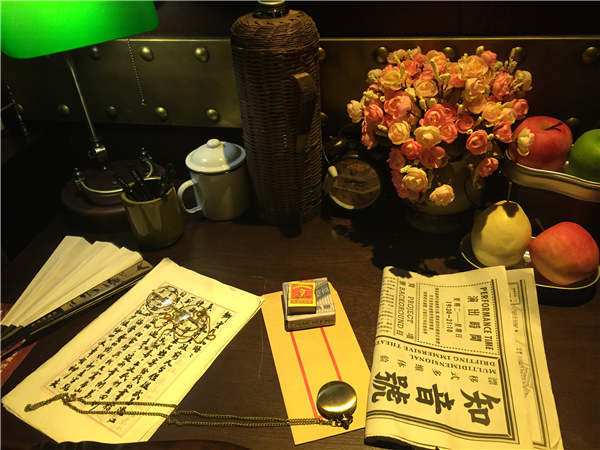 |
|
Items are used to reflect the 1920s Wuhan. |
On the cruise ship, there is no spectator stand.
"When the viewers get the tickets, they are passengers and they may dance and talk with the performers and are able to have access to any drama site," says Fan.
On the re-creation of an old wharf, where the viewers are waiting to board a ship, they find themselves brushing against those in traditional gowns or qipao. Some carry suitcases and some wave handkerchiefs to say goodbye.
Stepping into any room on the second deck, viewers can listen to stories told by performers who play the roles of passengers-a young man who left home to search for his lost younger brother, a hostess betrayed by her lover or a failed businessman from Wuhan.
Made up of three former cities of Hankou, Wuchang and Hanyang, Wuhan has been an important trading post since the 19th century, due to its strategic location at the confluence of the Hanjiang and Yangtze rivers.
"There are more than 10 stories. All the roles are set in 1920s Wuhan and many of the roles are based on true stories," says Li Shuyong, Wuhan publicity director.
Viewers can talk with these performers to find more about those stories. The director says he set just a theme for the stories, rather than fixed scripts.
"Like an app programmer, I designed a game, where all the people, including the audience, blend their personal experiences and feelings into it and make it a complete story," says Fan. "The show is different every day and the plot is extended through every person who takes it."